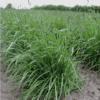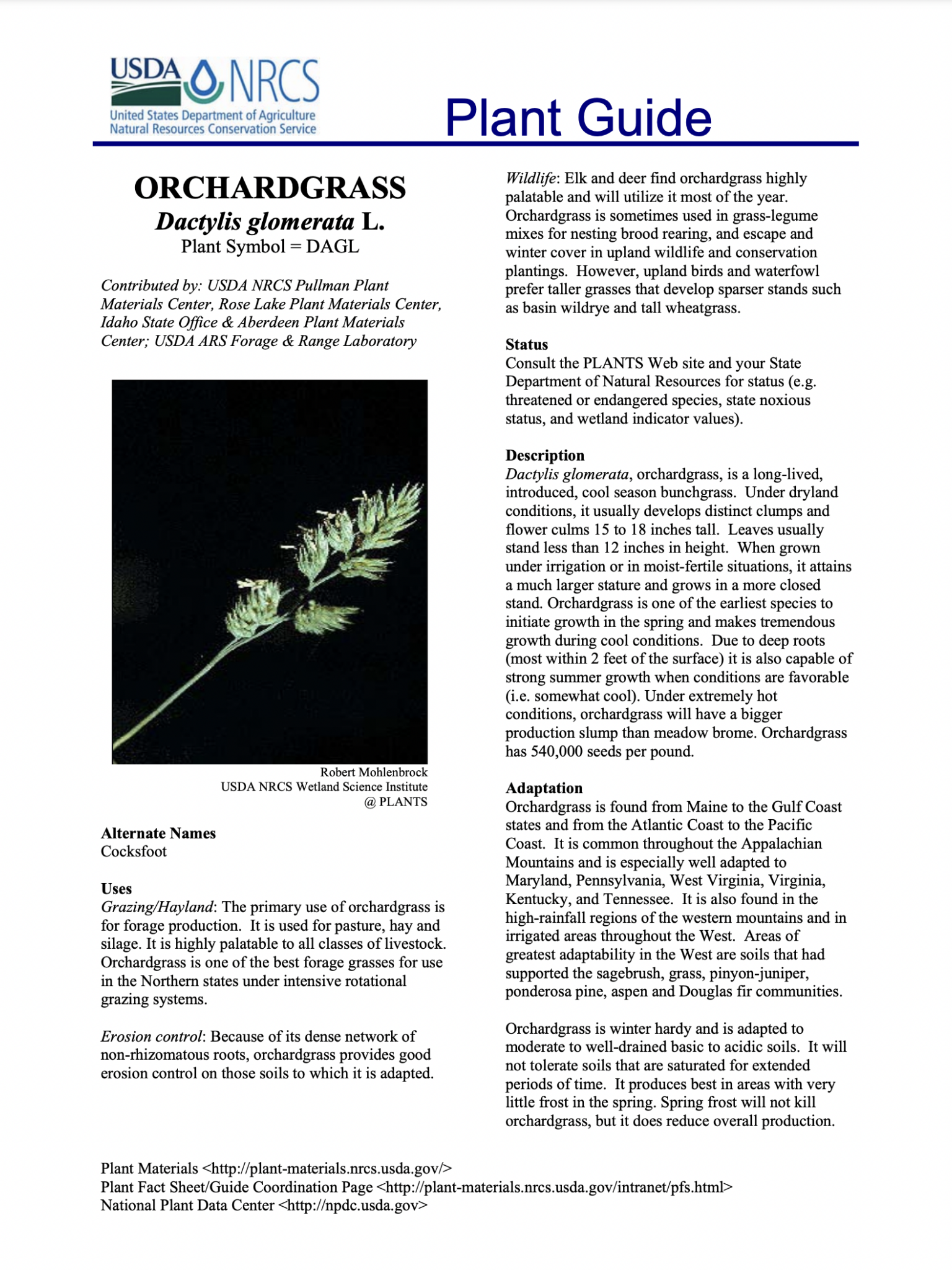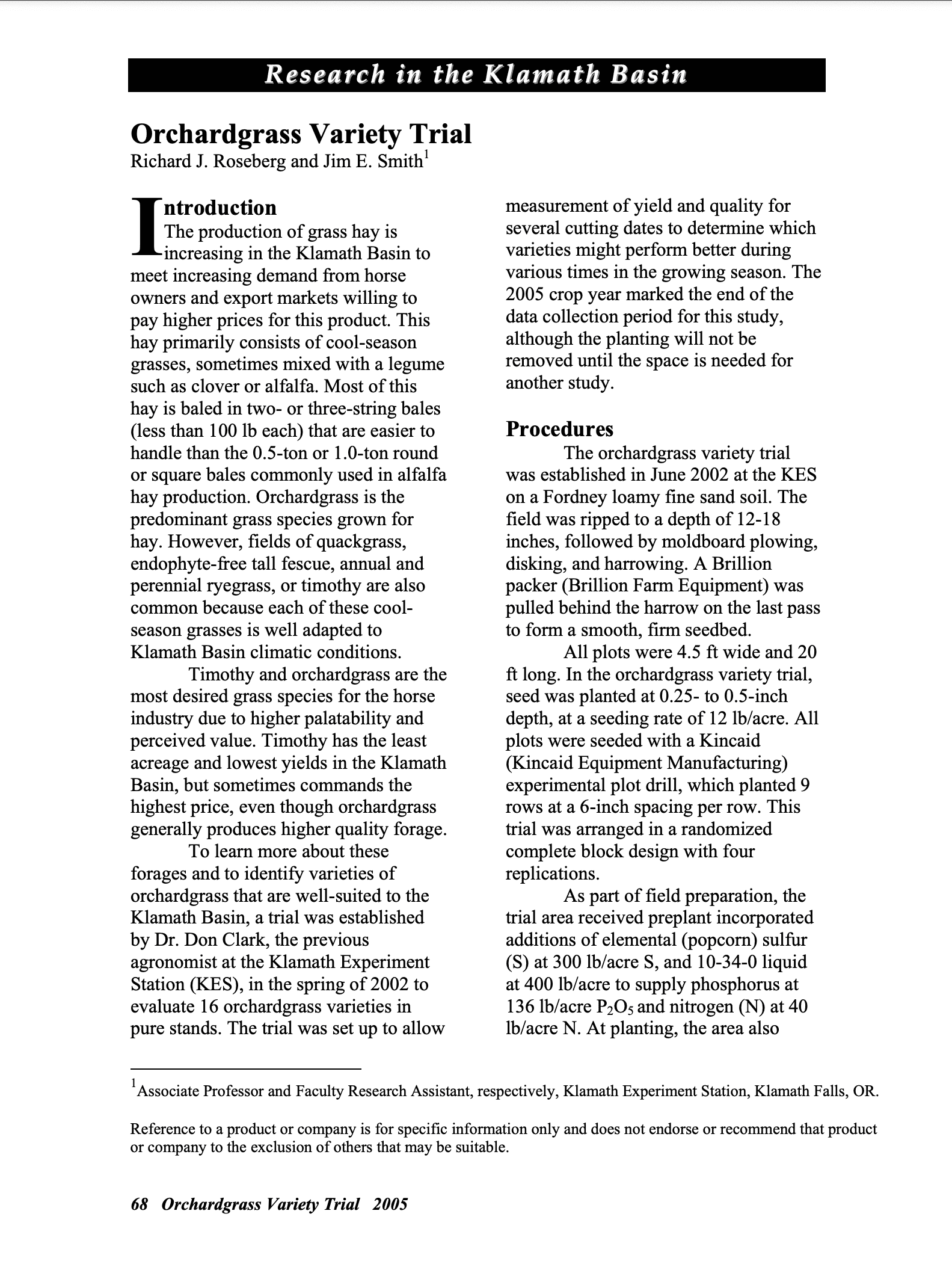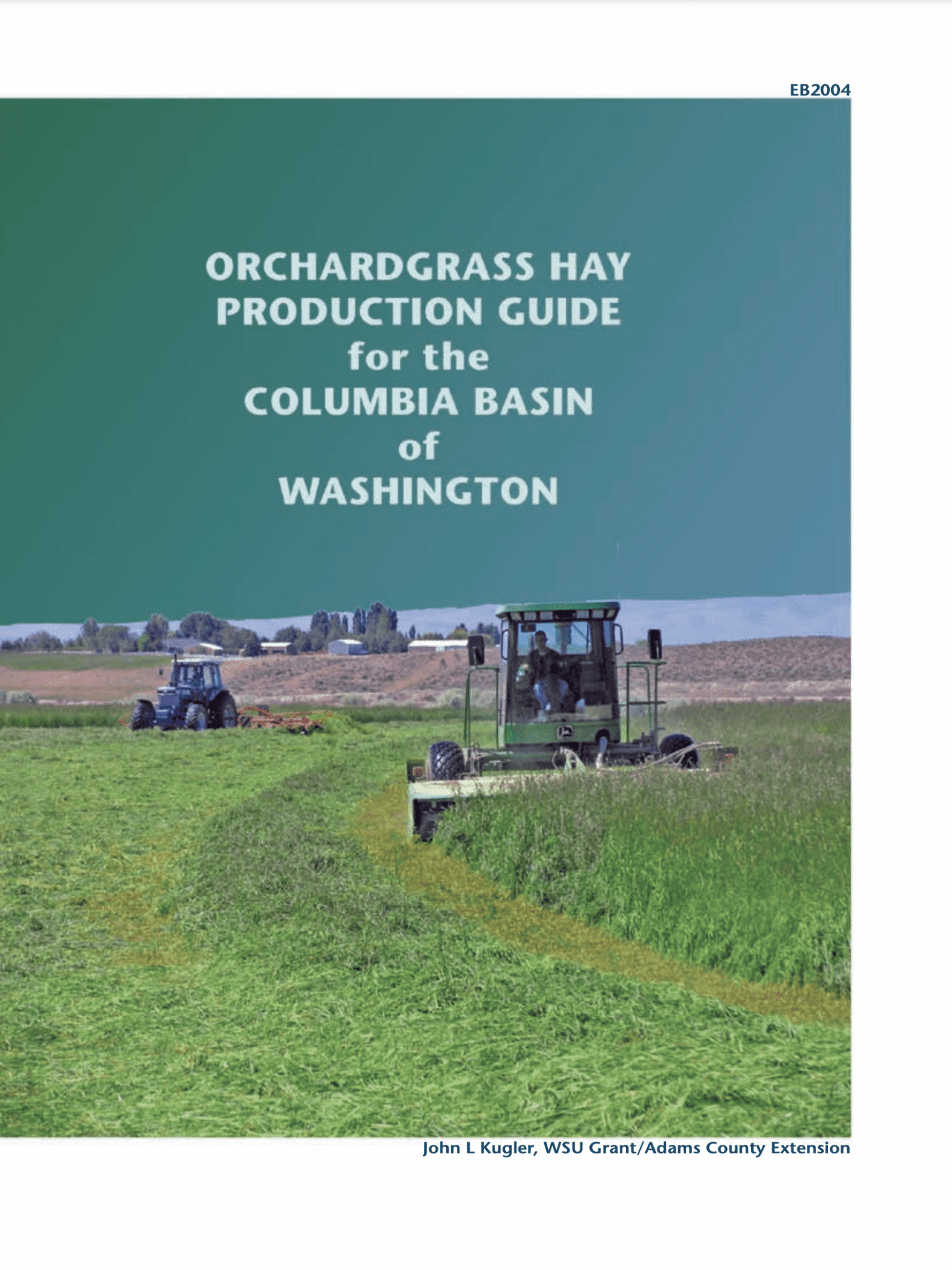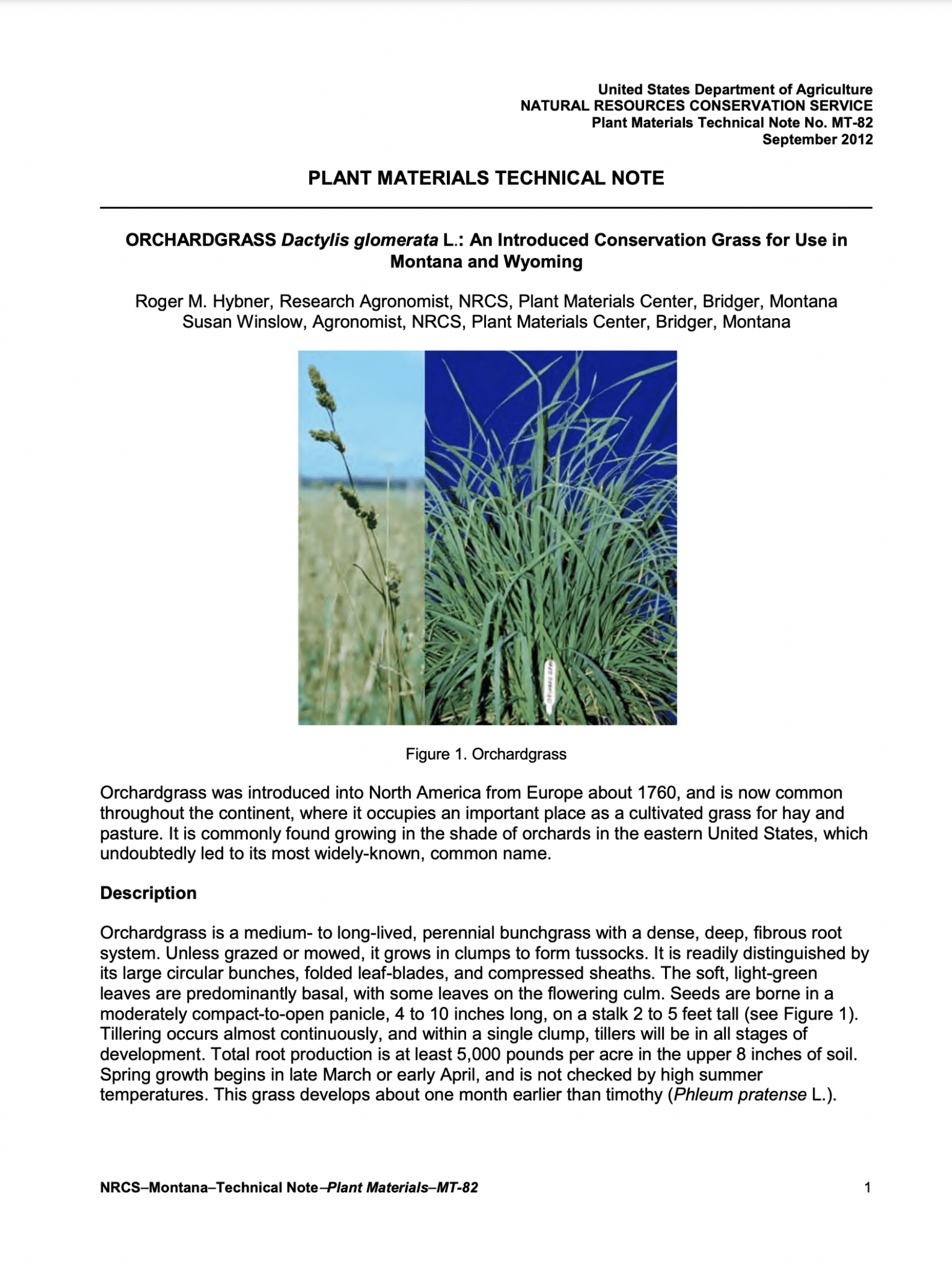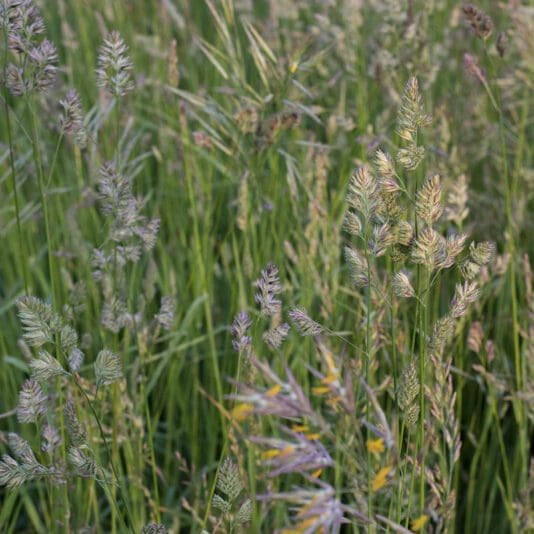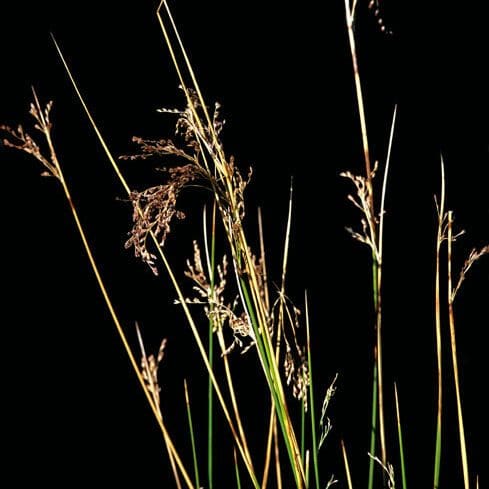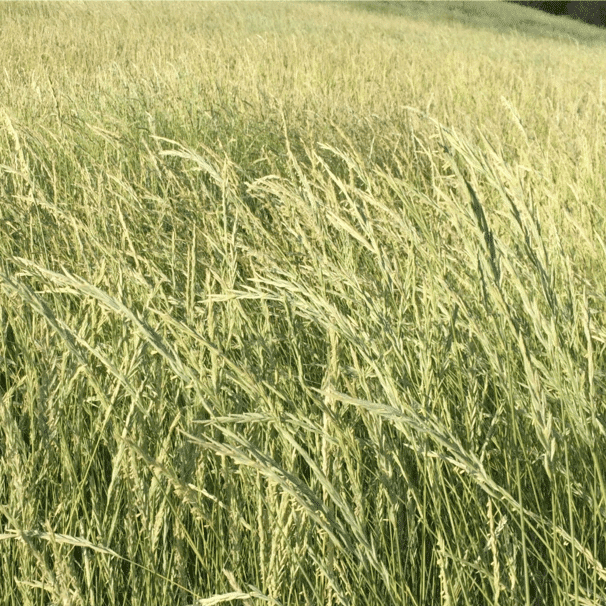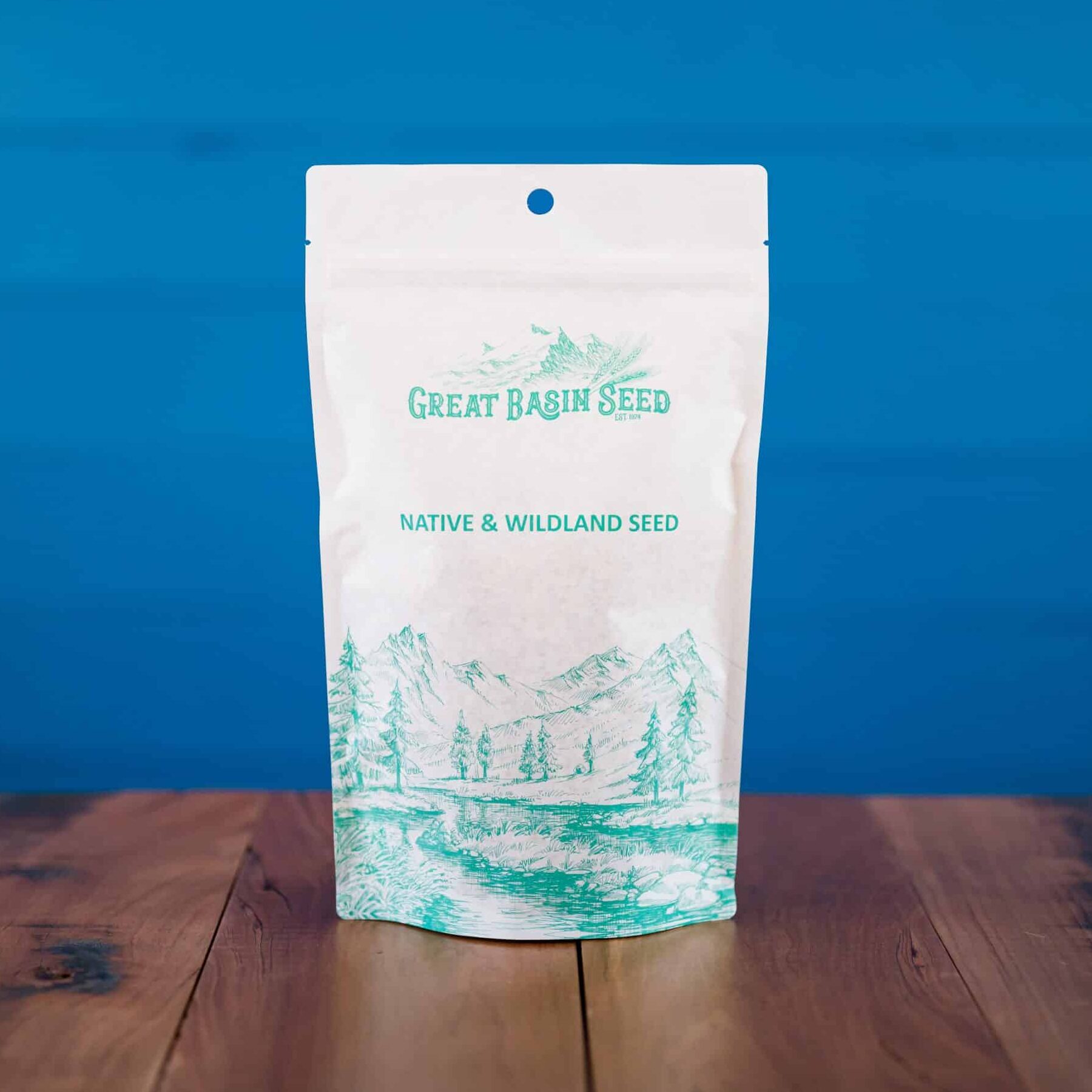Min. to Max. Annual Precipitation
44in.
Average Max. Height
Blizzard Orchardgrass is a medium-late maturing orchardgrass that has high forage yield and a winter survival rate that is superior to other varieties. Best to establish in either early spring or late summer. Used for grazing, hay production, pasture or silage. It is highly palatable to all classes of livestock. Also provides good erosion control.
Blizzard Orchardgrass (Dactylis glomerata) is a medium-late maturing orchardgrass variety. You can find it widely adapted throughout United States and Canada. A nursery in Neapolis, Alberta Canada developed this variety from plants selected from a three year old winter survival. It is similar in plant structure and color to Benchmark Plus and Haymaster. Blizzard is similar in winter survival ratings to Kay and Killarney.
When we compare varieties for winter survival Blizzard is superior. Furthermore, this orchardgrass has high forage yield potential and improved stem rust resistance. Whether used for grazing, hay production or in mixes, the agronomic advantages of Blizzard make this a highly desirable variety.
This variety is easy to establish in either early spring or late summer. Be aware that of it’s mid-late maturity times. We recommend using a seeding rate of 8 to 12 lb per acre. If you are mixing legumes with your Orchardgrass the seeding rate should be reduced. Oftentimes when seeding orchardgrass with other grasses it will not do well because of differences in maturity and palatability.
Orchardgrass is used for grazing, hay, pasture or silage. It is highly palatable to all classes of livestock. Blizzard Orchardgrass is one of the better forage varieties for use in pastures and in combination with alfalfa or Red Clover for hay.
Erosion control: Because of its dense network of roots, Orchardgrass provides good erosion control on those soils to which it is particularly adapted.
Wildlife: Orchardgrass is used in grass-legume mixes for nesting, broad rearing, escape and winter cover for upland game birds and conservation plantings.
Establishment of Blizzard Orchardgrass
You can easily establish this variety of orchardgrass with grain drills or by broadcasting seeding.
Seeding rate (drilled): is 8 to 12 pounds/acre.
We recommend a seeding rate of 3 to 4 pounds/acre for range and critical area treatment.
Seeding rate (broadcast): 16 to 24 pounds/acre.
Mixtures: When seeding in mixtures make adjustments in seeding rate.
Seeding depth: No more than 1⁄2 inch.
Orchardgrass (Dactylis glomerata) performs well on different textured soils. Blizzard establishes well on soils ranging from clay to gravely loams and on shallow to deep soils. However, it does not grow well in saline soils and areas with high water tables. It has the ability to establish and persist in areas that receive as little as 12 inches of annual precipitation. Lastly, Orchardgrass performs best in a pH range of 5.8-7.0.
| Variety | Maturity | Notes: |
|---|---|---|
| Paiute | Early | Drought tolerant. Common in dryland pastures, reclamation, erosion control. |
| Hallmark | Early | High Yielding |
| Benchmark Plus | Early | Persists under heavy use, superior forage. Superior for grazing. |
| Potomac | Early-Mid | Excellent early variety. |
| Quickdraw | Early-Mid | Fast recover after cutting. Tolerates heat. |
| Pawnee Orchardgrass | Mid | Widely adapted, drought and grazing tolerant. |
| Crown Royal | Mid-Late | Fast recovery after cutting, tolerates heat. |
| Extend | Mid-Late | Ideal for alfalfa & clover mixes. Superior yield. |
| Blizzard | Late | Superior winter survival. Widely adapted, excellent forage yield. |
| Sunset Orchardgrass | Late | Excellent for use with hay, clover or pasture mixes. Improved foliar disease resistance. |
| Sundown Orchardgrass | Late | Aggressive tillering and fast re-growth. Maturity is similar to that of Pennlate. |
| Latar | Late | Old variety with limited availability. Extend, Quickdraw, Sunset and Sundown are improved varieties. |
*** Click on the “Quick Plant Facts” tab above for more information. ***
Orchardgrass NRCS Plant Guide and Fact Sheet
Orchardgrass NRCS Plant Guide and Fact Sheet
PDF version of NRCS Plant Guide & Fact Sheet
Prepared By: Tony Bush USDA NRCS Rose Lake PMC East Lansing, Michigan
Dan Ogle USDA NRCS Idaho State Office Boise, Idaho
Loren St. John USDA NRCS Aberdeen PMC Aberdeen, Idaho
Mark Stannard USDA NRCS Pullman PMC Pullman, Washington
Dr. Kevin B. Jensen
USDA ARS Forage and Range Research Laboratory
Utah State University, Logan, Utah
Species Coordinator: Mark Stannard USDA NRCS Pullman Plant Materials Center Pullman, Washington
Orchardgrass Variety Trial 2005
Orchardgrass Variety Trial 2005
Research in the Klamath Basin
Prepared By: Richard J. Roseberg and Jim E. Smith
Orchardgrass Hay Production Guide for the Columbia Basin of Washington
Orchardgrass Hay Production Guide for the Columbia Basin of Washington
Prepared By: John L Kugler, WSU Grant/Adams County Extension
Orchardgrass NRCS Plant Materials Technical Note
Orchardgrass NRCS Plant Materials Technical Note
An introduced Conservation Grass for Use in Montana and Wyoming
Prepared By: Roger M. Hybner, Research Agronomist, NRCS, Plant Materials Center, Bridger, Montana
Susan Winslow, Agronomist, NRCS, Plant Materials Center, Bridger, Montana
Helpful Links
Additional information about this product can be found on the academic websites linked below.
Synonyms
Many plants have more than one common and scientific name. We've listed a few of them below.
- Blizzard Orchardgrass
- Dactylis glomerata
Who is Great Basin Seed?
Great Basin Seed is a seed company that specializes in seed sales and consultation for home, ranch, farm, range and reclamation. We have been a leader in the seed industry since 1974.
Our History
We've been in the seed business since 1974.
What We Offer
We offer seed for home, farm, ranch, range and reclamation projects.
Meet the Gang
We have the best employees in the world! We are proud of the work they do, and trust them to serve you!
Right: Company founder Lloyd and his wife Paula Stevens in a wildflower seed production field circa 1977
Quick Plant Facts
| Common Name: | Blizzard Orchardgrass |
|---|---|
| Scientific Name: | |
| Lifespan: | |
| Origin: | |
| Plant Type: | |
| pH Tolerance: | |
| Growth Height: | |
| Root Form: | |
| Planting Rate: | |
| Min. Precipitation: | |
| Best Time to Sow: | |
| Max Sowing Depth: | |
| Growth Season: | |
| Sun & Shade Tolerance: | Full Sun |
| Elevation of Occurance: | |
| Hardiness Zones: |

